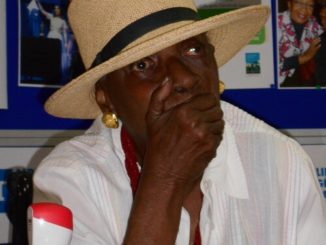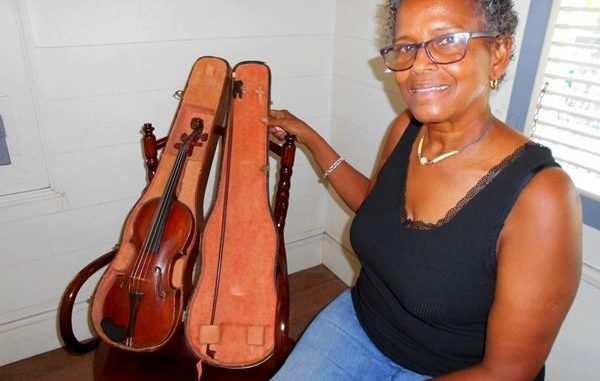
On the occasion of this 36th edition of the European Heritage Days (EHD), the antique dealer Marie-Line Bourguignon decided to show the public objects that were part of the daily life of the inhabitants of the Guadeloupe archipelago, a few decades ago, in an exhibition entitled “Le passé retrouvé” (The recovered past).
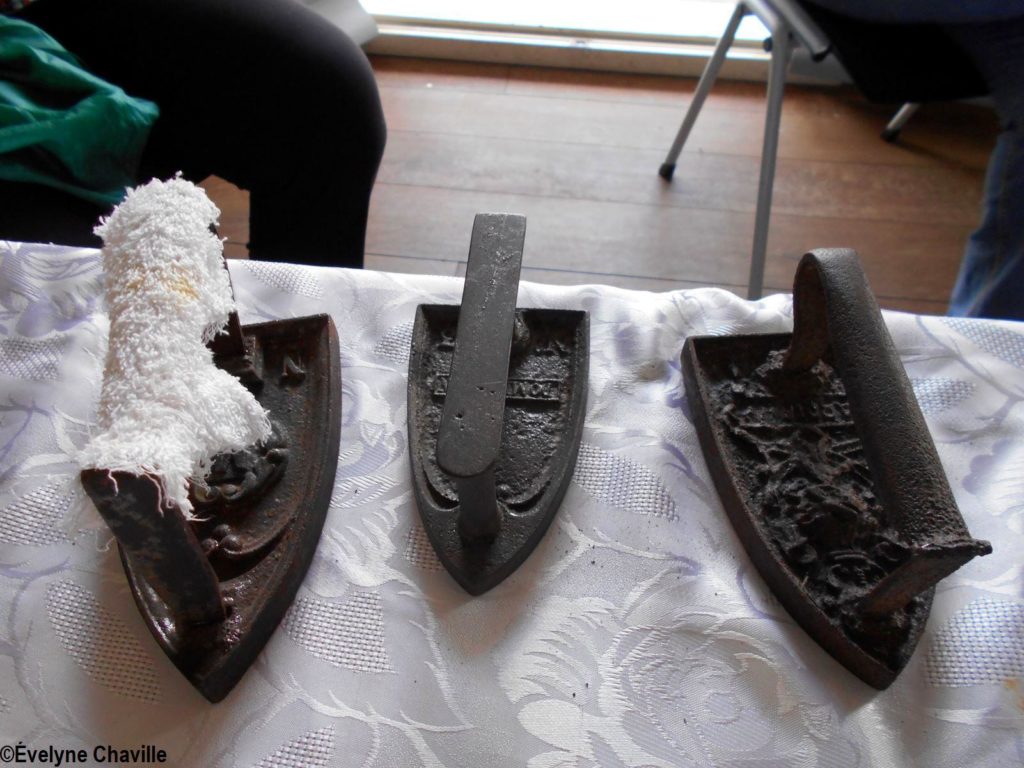
During these three days devoted to heritage (September 20 to 22), at the Pavillon de la Ville in Pointe-à-Pitre, people of all ages and from all backgrounds came to see these objects that Marie-Line Bourguignon presented.
On the first floor, the largest room housed sewing machines, a bank scale for weighing gold and another scale for weighing food, oil lamps, a typewriter, a telephone, a mill for grind the cocoa beans, a roaster, a coffee mill, a coffee maker, “karo” (ancestors of the electric iron), plates, saucers and cups from the porcelain factory of Victor Schoelcher’s father (French politician who fought for the abolition of slavery in 1848), a photo of members of the well-known “Solidarité Scolaire” association with personalities, antique furniture, cloth dolls, old local newspapers dating back more than 50 years (Le Nouvelliste, Antilles Matin, La Tribune…). Although the majority of these objects belonged to Guadeloupeans, they were not made on the island except for wooden objects (furniture, etc.). It was impossible to not ask Marie-Line Bourguignon how she was able to gather together all these objects that are only part of what she has.
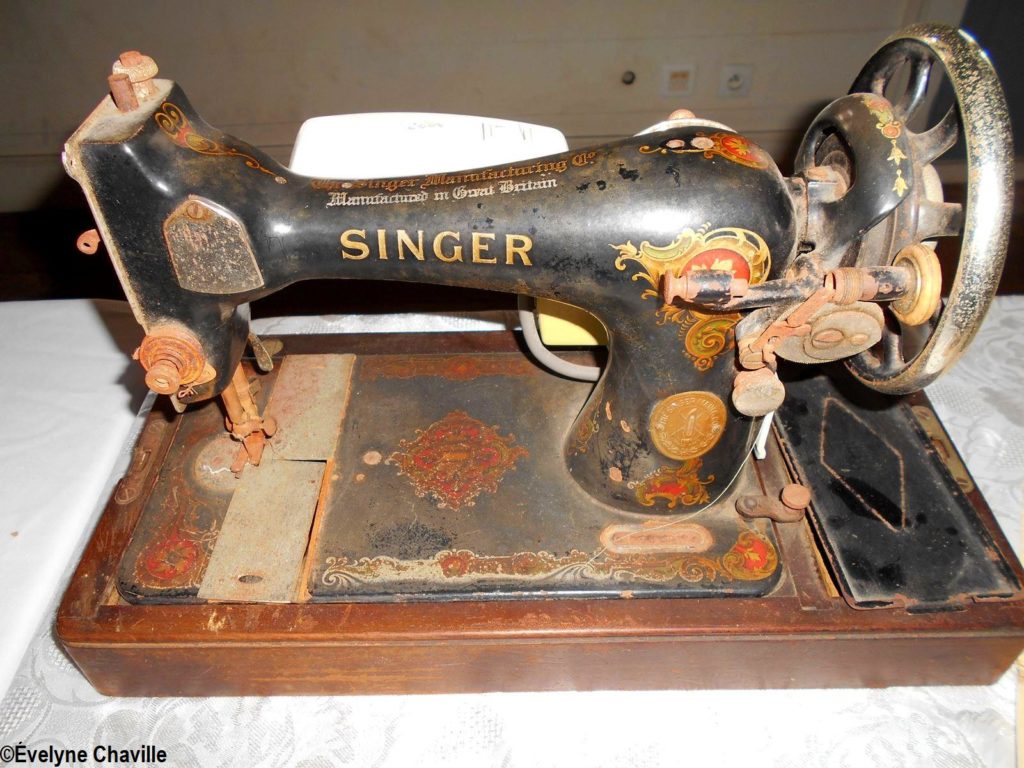
The passion for ancient objects
“Since I was a child, I’ve always been attracted to old things. When I made my first communion, a cousin gave me an album so I started to collect stamps, then capsules, boxes of matches etc. When I became an adult, I knew that every New Year’s Day, people used to get rid of old things so I drove up and down the streets of Pointe-à-Pitre to pick them up. One day I found a beautiful column bed at de Chambertrand Street, I put it in the car and took it to Mr Fanfan, a Haitian who was a cabinetmaker. When he saw it, he said “wouaw it’s a beautiful bed!”, he asked me for 1,000 FF to repair. After repair, I hired a truck to take it home. The family doctor saw it and asked if it was for sale I did not working at the time and I did not know much about antique furniture so I asked her 3 000 FF for it. She accepted immediately, for me, it was a lot of money but I knew after that furniture was worth 10,000 FF (…). So I continued to pick up or buy things and I crammed them into a room. I phoned Dr Mayoute to offer her some objects and she bought them. As soon as they destroyed a house in Pointe-à-Pitre, I went to see what I could find (jars, newspapers, furniture, for example). Once, I got a collection of demijohns. People did not yet know the value of these objects, for them it was “vyé biten” (old things) that they wanted to throw away. They should not be judged because often these objects reminded them of “An tan Sorin” (*Governor Sorin’s time during the Second World War) they wanted to forget”, said Marie-Line Bourguignon.
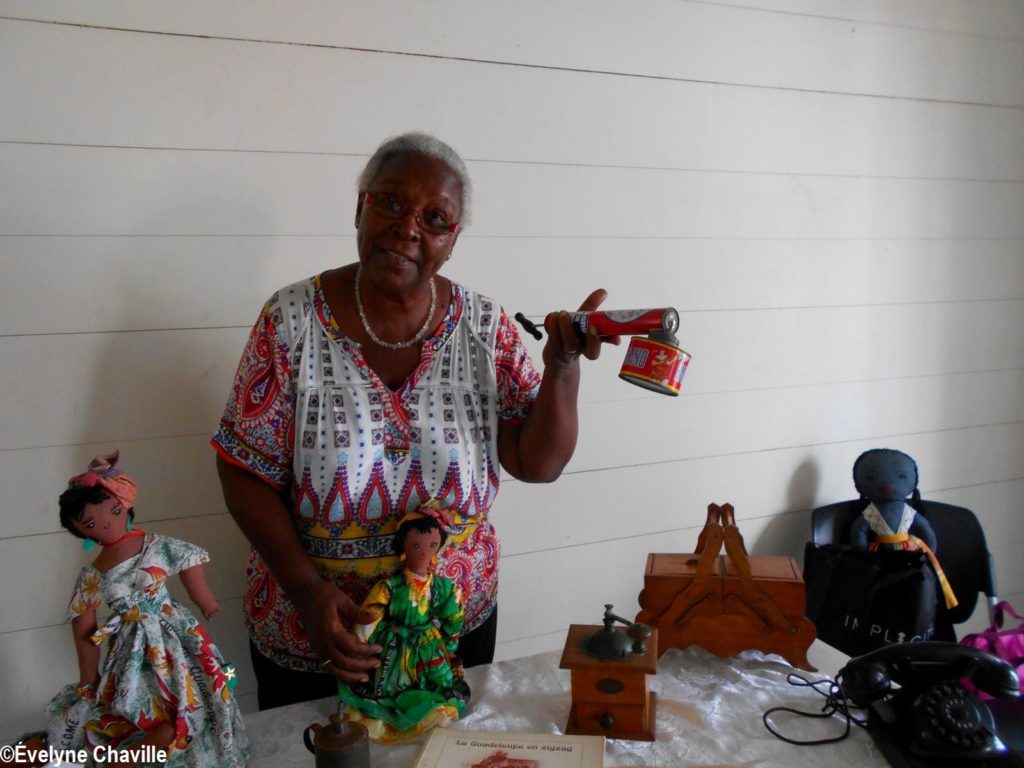
An activist antique dealer
The collection of ancient objects which was first her passion became her profession. In 2007, the young woman decided to establish herself as an antique dealer at Schoelcher Street; the name of her shop: La Brocante des Îles. Locals and tourists do not hesitate to push the doors of this “Alddine’s cave” to look at the items or buy one and ask for information. “When people come to value a piece of furniture they want to sell, I propose to restore it at my own expense (I work with a young man who works very well and at a very low price), if after restoration they still want to sell it, I buy it but very often they prefer to keep it, so I help the Guadeloupeans keep at home their heritage. I’ve already tried to buy some beautiful antique objects in Marie-Galante but people prefer to keep them at home, they refuse to sell them, that’s also why they say it’s an authentic island”, explained Marie-Line Bourguignon.
During this cultural event, the antique dealer was assisted by her cousin, Line Bourguignon, a retired professor of French literature, who has a passion for the past and even made the family tree up to the 17th century and discovered a Fulani ancestor…
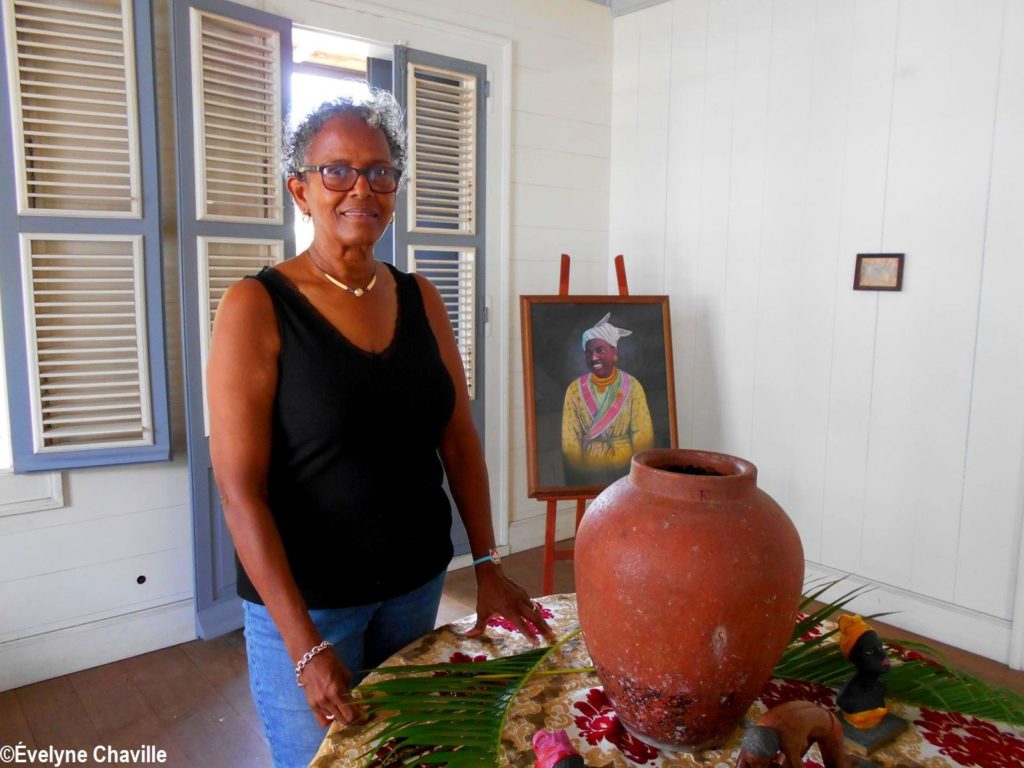
A molasses jar of more than 2 centuries
But the star of this exhibition “Le passé retrouvé” was a molasses jar, exhibited in the center of a small room with three paintings among them a small on the wall depicting a young black woman painted by a Dutch painter in 1927 and a violin that only wealthy families owned, just a few years ago.
Each visitor wanted to know the story of this famous jar made between 1760 and 1800 and Marie-Line Bourguignon, tirelessly told: “this jar had a cone on it and molasses was poured into it. In the jar, the molasses hardened and it gave a block of sugar, after the jar was broken to get the sugar and break it into pieces, the sugar in grains did not exist at that time. This jar was made by slaves from the Fidelin Pottery, the Fidelin are the first white family who set up a business in the Guadeloupe archipelago, in Terre-de-Bas, Les Saintes. They established a factory and they sold their production in the Caribbean (Cuba, Dominican Republic etc). The Fidelin had 200 slaves – they were the best in their field – and they crossed the sea by canoe to get clay in Trois-Rivières. In this molasses jar, there is the letter F for Fidelin”, she told. Obviously, the person who sold this jar to the antique dealer did not know its value and the professional had to do some research… Marie-Line Bourguignon would like to buy this rare piece to a public cultural institution in Guadeloupe to protect it and to show it to a wider audience.













































